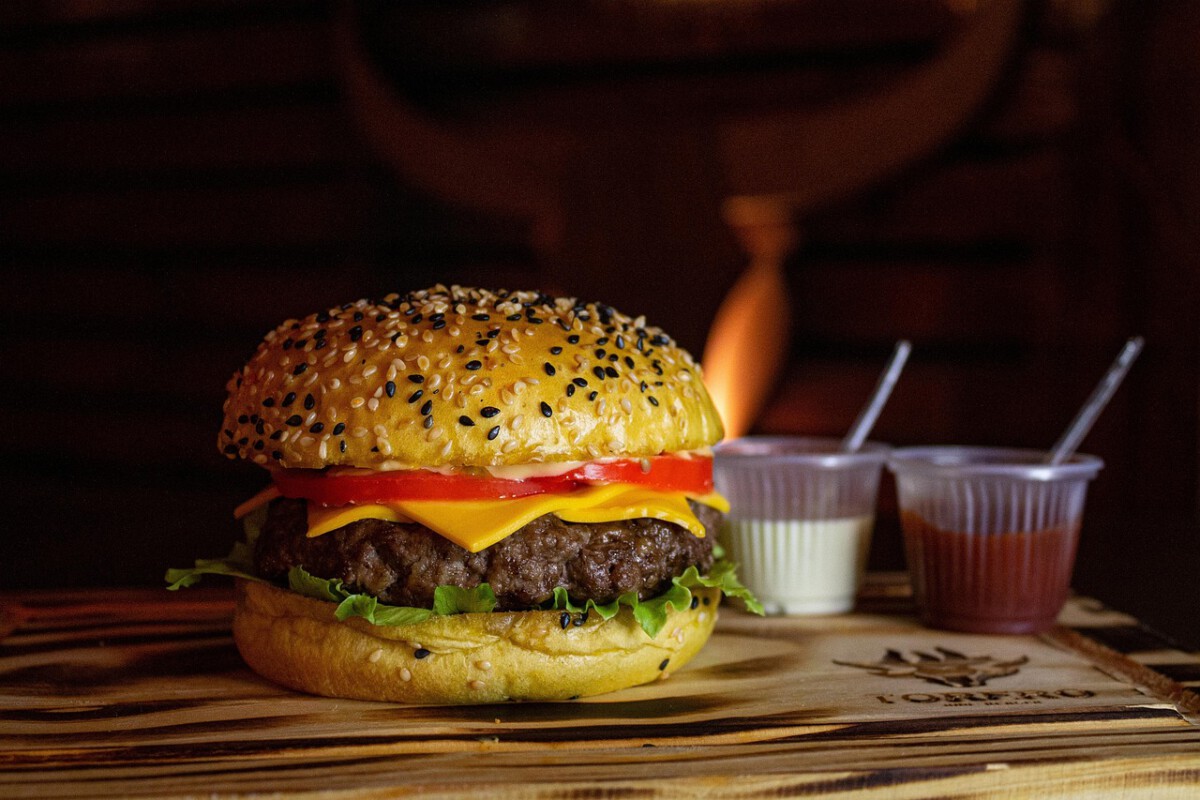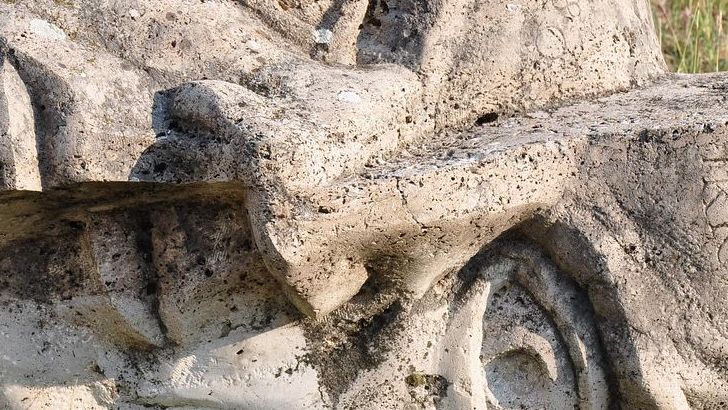The Immigrant Who Changed American Food Forever

Imagine if one man’s quick thinking during a lunch rush could change American dining culture forever. That’s exactly what happened at a small lunch wagon in New Haven, Connecticut in 1900, when Louis Lassen served up what is credited as being the first hamburger. Lassen was a “blacksmith by trade and preacher by vocation” and immigrated to New Haven from Denmark in 1881. He became a food peddler, selling butter and eggs from a wooden cart. In 1895, he began adding lunch items to his cart. What started as a simple food cart would soon transform into the birthplace of America’s most beloved sandwich, creating a legacy that has fed millions for over 125 years.
The Moment That Created an Icon

In 1900, a local businessman asked for a lunch to go. According to the Lassen family, the customer exclaimed “Louie! I’m in a rush, slap a meatpuck between two planks and step on it!” Answering a customer’s rush order for something “quick and delicious,” Lassen assembled a hamburger from ingredients intended for steak sandwich production. Using the materials at hand, he sandwiched broiled, ground beef between toasted bread and offered the customer a new creation. Think about it – this wasn’t a carefully planned menu item or marketing genius. It could be considered, I suppose, one of those happy accidents. After all, it’s not like much thought went into the creation of the first burger. It was, frankly, a bit of an afterthought. Sometimes the greatest inventions happen by pure chance, when necessity meets creativity in the most ordinary moments.
Official Recognition From the Library of Congress

In 2000, US Representative Rosa L. DeLauro successfully pushed for legislation that officially recognized Louis Lassen as the creator of the hamburger and the Library of Congress recorded that Louis Lassen had served the first American hamburger. In 2000, the Library of Congress recognized Louis’ Lunch as the creator of the hamburger after being backed by U.S. Representative Rosa L. DeLauro. The Library of Congress stated that Louis Lassen sold the first hamburger and steak sandwich in the U.S. in 1900. The birthplace of the hamburger is an honor that many eateries have tried to claim over the years, but only one has been officially recognized by the Library of Congress as the real thing. This wasn’t just local pride talking – this was the nation’s most prestigious institution of knowledge putting its stamp of approval on Connecticut’s culinary claim to fame.
A Family Business Spanning Four Generations

Family owned and operated, we are currently run by the 4th generation and are one of the oldest, family-run businesses in the country. Our restaurant prides itself on staying true to the family history and continuing to preserve the past for future generations. Though the business has been housed in different structures and moved several times, the Lassen family continues to prepare hamburgers using the same methods that had satisfied the hurried customer’s request. Run by Louis’ great-grandson, Jeff Lassen, not much has changed at the restaurant over the years. When you think about it, how many restaurants can trace their recipes and methods back to a single moment in 1900? This isn’t just a business – it’s living history served on a plate.
The Remarkable Journey Through Time and Location

In 1895, Lassen opened his lunch wagon on Meadow Street in New Haven to serve factory workers, and he traveled between two factory locations on Temple and George Streets. By 1907, Lassen chose George Street as a permanent location and secured his wagon alongside a local tannery. After a decade of business on George Street, Lassen purchased the tannery building, a move which provided increased cooking space and indoor seating for his popular eatery. The restaurant is so popular that when, in 1974, its owners faced eviction to make way for New Haven’s sweeping urban renewal program, New Haven residents protested. Louis’ Lunch is currently located at 263 Crown Street in New Haven. Despite a threat of demolition in the 1970s, which was narrowly avoided by relocating the historic building by truck to its current Crown Street location, the soul of Louis’ Lunch is preserved in its traditions. Picture the dedication it took to literally move an entire building rather than lose this piece of American history.
Original Equipment Still Making History

The hamburger Louis Lassen served was cooked in an 1895-dated broiler that the Lassens continue to own and operate. Hamburgers are made on the original cast iron vertical gas broilers from 1898, and the toast is made in a 1929 Savory Appliance Radiant Gas Toaster. The very same broiler that cooked up the first hamburger in 1900 — which dates to the 1890s — is still used to cook hamburgers at Louis Lunch today, over 110 years later. The spread is necessary because the unique vertical broilers that Louis’ Lunch uses would not be able to accommodate regular cheese. This isn’t just nostalgia – it’s functional history where every burger cooked today uses the exact same equipment that created the very first hamburger in American history.
The Secret Recipe That Never Changed

Louis’ Lunch is committed to serving a classic hamburger that is made with a proprietary blend of five cuts of meat, ground fresh daily. We want you to experience the meat’s true flavor, so we serve it on white toast and only offer cheese, onion, and tomato as garnishes. Burgers are served only on white Pepperidge Farm toast, a company that originated in nearby Norwalk, Connecticut, in 1937. The bread is toasted in a combination gas-electric toaster and sliced diagonally, similar to their initial hamburger. Though most hamburger joints have made the shift from bread to bun, Louis’ stays true to its original recipe, serving freshly ground meat on white toast like it’s 1900. While the rest of the world adapted and changed, Louis’ Lunch held firm to its original vision – and customers keep coming back for that authentic taste of history.
The Infamous No-Ketchup Policy

Critics of the restaurant point to its dislike of condiments, particularly ketchup; customers who ask for it are ejected from the premises. In episode 10 of Burger Land, the “no ketchup” sign is visible hanging in the restaurant and an informative caption reads “Yale students who try to sneak in ketchup are asked to leave”. Don’t even think about putting ketchup on a burger at Louis’; there is a sign admonishing against even asking for it, because as Jeff Lassen, fourth-generation owner, says, “We want you to taste the meat”. Connecticut Museum Quest ranks it as number 2 of “the 5 Least Welcome Places for Ketchup”. It might seem harsh, but there’s something admirable about a restaurant that refuses to compromise its vision just to please every customer – even Yale students who should know better by now!
Competing Claims and Historical Challenges

In 2006, Texas State Representative Betty Brown drafted a bill that claimed one Fletcher Davis of Athens, Texas, as the creator of the hamburger. Challenges to the origin of the hamburger have also originated from Hamburg, New York, and Seymour, Wisconsin, though these rely on oral history rather than documentary evidence and artifacts. But there are several claimants to the burger-creation throne, and after plenty of digging, we concluded there is no verifiable answer to the question of who invented the meaty meal. Filmmaker and burger expert George Motz told us: “The claim that Louis’ Lunch has is semi-legit,” adding that other claims “are equally valid and equally muddy”. Where there’s burger smoke, there’s fire — from April to July 1894, four burger mentions in four locations from coast to coast. “In 1894, the Hamburger Steak Sandwich was already known across the country, and not just in one limited region,” Auffrey writes on his blog. The truth is, multiple people might have stumbled upon this brilliant idea around the same time – but only Louis’ Lunch has the documentation and physical evidence to back up their claim.
America’s Love Affair With Burgers Today

According to the United States Department of Agriculture (USDA), Americans consume an average of 2.4 burgers per day, which is about 50 billion burgers per year. The report also offers a look beyond burger trends at how and where we get our burger fix (76% of consumers have had a burger within the last week). 84% of people enjoy beef burgers, and 79% eat them at restaurants at least once per month. Different states prefer beef prepared in different ways. For example, some of the states eating the most steaks are Florida, California, Nevada and Washington, while the upper Midwest has a penchant for ground beef and hamburgers. What started as one man’s quick lunch solution has become a national obsession that defines American dining culture more than any other single food item.
The Modern Legacy of a Historic Invention

Recognized by the Library of Congress as the Birthplace of the Hamburger Sandwich, Louis’ Lunch has been featured in many print and television spots, including: The Travel Channel, The Food Network, Zagat, Food and Wine Magazine, among many others. In addition to being the birthplace of the American hamburger, Louis Lunch is also the oldest continuously-operating hamburger restaurant in the United States. Established in 1895, Louis’ Lunch is a family-run restaurant with a meaty legacy involving the accidental invention of America’s favorite food. Listed in the National Register of Historic Places, history and mouth-watering food unite with vintage charm inside the long-running diner. Here is what Louis’ Lunch has that no one else does: they have been making hamburgers longer than anyone. For more than 100 years, four generations of Lessen’s have served their creation to the people of New Haven, CT. In a world of fast food chains and corporate restaurants, there’s something magical about a place where history isn’t just remembered – it’s still being served fresh every day.
Who would have thought that a Danish immigrant’s hurried response to a customer’s request would become America’s defining culinary contribution to the world?








